By Eric Vandenbroeck and co-workers
Today, India’s prime minister’s annual Independence Day speech
reflected how
far political discourse has fallen in New Delhi.
Before his speech, PM Modi hoisted the ‘Tiranga’
at the iconic Red Fort in New Delhi. This was also Prime Minister's ninth
Independence Day address to the nation from the Red Fort.
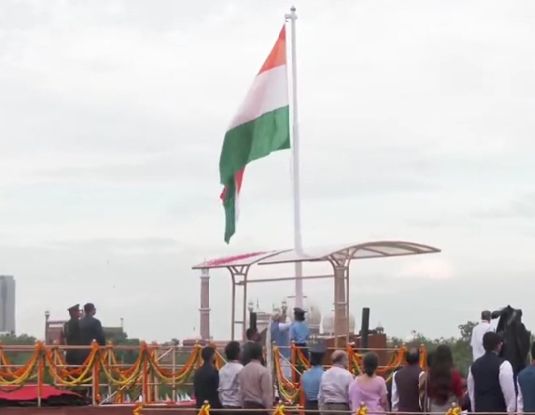
PM Modi hereby sported a Tricolour-themed
turban for Independence Day, imbibing the ‘Har Ghar Tiranga’ spirit. If we look back, one notices that, unlike
prior revolutions, India’s split from the British Empire came about through a
political movement committed to nonviolence. The Indian National Congress, led
by Mahatma Gandhi, organized peaceful demonstrations on an unprecedented
scale. The mighty British Empire ultimately capitulated, encouraging
anticolonial movements worldwide.
India has long commemorated this watershed moment on Aug. 15, headlined
by the prime minister’s speech on the ramparts of the Red Fort in New Delhi.
Leaders traditionally set aside partisan rivalries in these speeches, focusing on
apolitical themes: the importance of Gandhi and the nonviolence movement, the
resilience of India’s democracy, and the importance of tolerance and inclusion.
Indian Prime Minister Narendra Modi has mostly stuck to this formula, but this
year’s speech signaled how Modi is trying to redefine what it means to be an
Indian. Gradually moving away from what was pointed out in Why I killed Gandhi.
The RSS is an organization like a private army. This was also
illuminated by James Crabtree’s 2018 book “The Billionaire Raj: A Journey
Through India’s New Gilded Age,” where, during an interview with Crabtree,
Modi’s brother Prahlad the latter recalls that Modi
started on his current path as a full-time volunteer and lived in the Ahmedabad
headquarters of the RSS where he went “very deep into the RSS and its works of
nation-building and patriotism” and “decided to dedicate his life to that.” (1)
Modi then set up a unit of the RSS’s students’ wing, the Akhil Bharatiya Vidyarthi Parishad, after which, Modi rose
steadily in the RSS hierarchy, and his association with the organization
significantly benefited his subsequent political career.
Underneath Volunteers of the Rashtriya Swayamsevak
Sangh (RSS). gather for a large-scale congregation in Meerut.
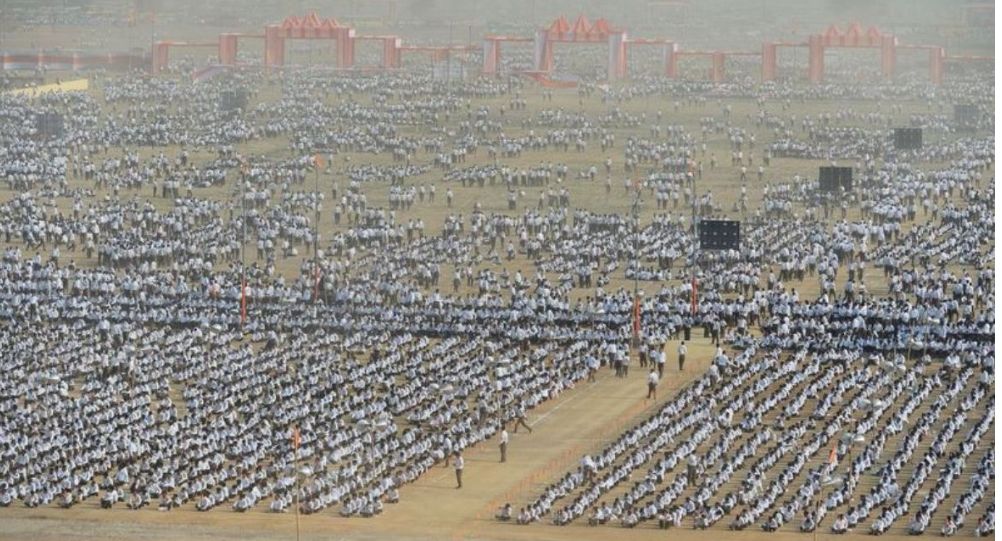
According to Walter K. Andersen and Shridhar D. Damle,
the RSS sought to draw upon the dense network of mutts, ashrams, and other
organizations of monastic orders to develop political Hinduism. (2)With the
gradual rise of the BJP, Muslims are particularly marginalized politically and
pushed out of public institutions such as the police and the judiciary. Muslims
hold just 4 percent of seats in the outgoing parliament, down from a peak of 9.6
percent in 1980. During Modi’s first term, expressions of anti-Muslim hatred
have grown more common and acceptable in public life.
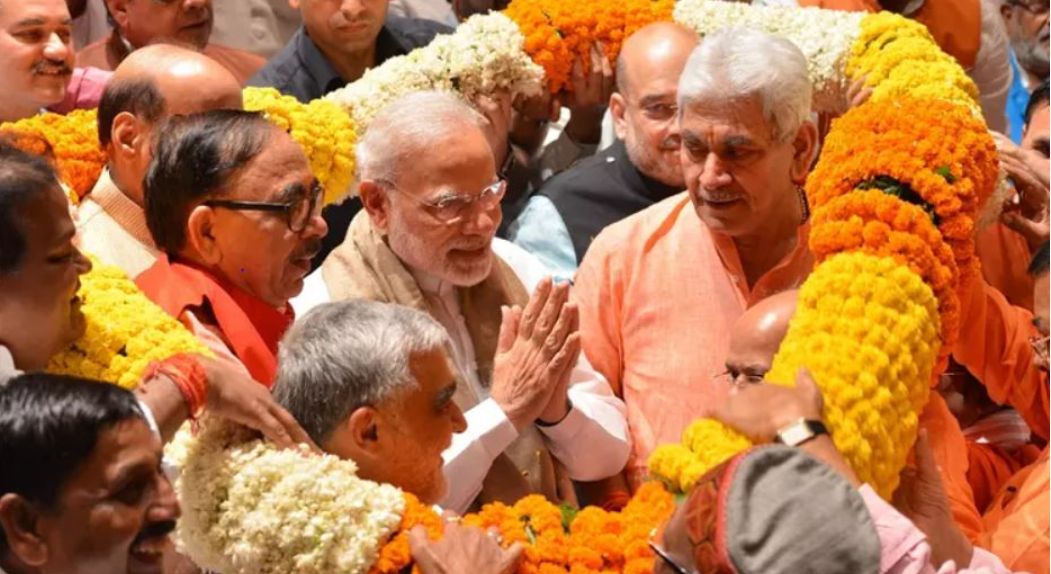
One symptom of this is a growing number of lynchings of Muslims concerning
cows, animals considered sacred by orthodox Hindus. In September 2015,
a Muslim laborer, Mohammad Akhlaq, was murdered
by his neighbors in a village outside New Delhi on suspicion of eating beef.
Afterward, officials seized meat samples from the victim’s home to determine if
it was beef, which extremists argued would be a mitigating factor in his
killing.
Between May 2015 and December 2018, at least 44 people, 36 Muslims,
were killed across 12 Indian states. Over that same period, around 280
people were injured in over 100 different incidents across 20 states.
Earlier on 28 May 2020, Prime Minister Narendra Modi, Vice President M
Venkaiah Naidu, and others paid tributes to Vinayak Damodar Savarkar,
who popularized the term Hindutva. Today exemplified by Modi Savarkar, is loved
by the Hindu right with centrists and Muslims, Sikhs, Jains, and
Buddhists, in India, not to mention Kashmir, having a different
opinion.
A key conclusion from this analysis is that Hindu nationalist ideas
about identity, culture, and politics draw on and, to some extent, reflect the
construction of ideas about the Indian nation and its cultural heritage in the
late nineteenth and twentieth centuries. Nevertheless, I have suggested that
the use of formulas and explicit religious symbols to draw the boundaries of
national identity may be construed as distinctive. Two lines of thought, the
obsessive concern with conversion and the aggressive assertion of ownership
over sites projected as sacred - indicate this distinctiveness.
Yet even here, there is a degree of embeddedness in broader fields of
thought. Perhaps the clearest post-independence example of this point is the
restoration of the Somnath temple in 1947/8.
Conversion issues also indicate a broader reach for ideas associated
with Hindu nationalism than the formal organizations of the Sangh Parivar.
Like Savarkar's Hindutva, Godse's self-justification sees recent events
against the backdrop of centuries of "Muslim tyranny" in India,
punctuated by the heroic resistance of Shivaji, the Hindu emperor. He carried
on a military campaign against the Moghul rulers in the eighteenth century with
brief success. Like Savarkar, he describes his goal as creating a strong, proud
India that can throw off centuries of domination.
Ripping up this vision of Gandhi was an important part of Savarkar's
politics. Only then could he have thought of making his politics succeed.
Savarkar had some advantages. The vision he espoused was easy to convey to
those who shared his obsession with Brahmin ascendency in politics, projecting
Muslims as enemies of their faith-based nationalism to unite various castes of Hindus without
altering the hegemony of the traditional social elite.
Members of the RSS (the parent organization of Vishwa Hindu Parishad) and
prominent Hindu thinkers in India and abroad were reportedly invited to Mumbai
(then Bombay) in India in August 1964. According to published reports, it was
decided that a new organization named Vishwa Hindu Parishad would be formed and
launched two years later, in 1966, at a world convention of Hindus.
Soon after its inception, the VHP focused on the Ramjanmbhoomi (birthplace of Lord Ram) issue in Ayodhya, India. Hindu extremists allege that the Babri
mosque is built in Ayodhya, in the western state
of Uttar Pradesh, is the birthplace of Lord
Ram (a revered Hindu God). Hindu fundamentalists, including the VHP, have
propagated that the Babri mosque is "replaced" by a Hindu temple of
Ram at the disputed site.
Later the RSS would support the Bharatiya Janata Party (BJP) and its chosen
representative after Prime Minister A. B. Vajpayee started his RSS organizer.
Today Godse is something of a hero on BJP and RSS
websites. Picturing the atmosphere at the time Nehru, believed that the murder
of Gandhi was part of a "fairly widespread conspiracy" on the part of
the Hindu right to seize power; he saw the situation as analogous to that in
Europe on the eve of the fascist takeovers. And he believed that the RSS was
the power behind this conspiracy.
Not surprisingly, in his speech, Modi ticked the boxes by mentioning Gandhi and his
commitment to inclusion, but he also departed from convention in essential
ways. First, he celebrated more than a dozen freedom fighters who had adopted a
violent approach to independence. These freedom fighters operated independently
of Gandhi and the Indian National Congress, undermining Gandhi and nonviolence
within India’s independence movement. By highlighting them in the speech, Modi
subtly rebelled against the conventional narrative and Gandhi’s central role.
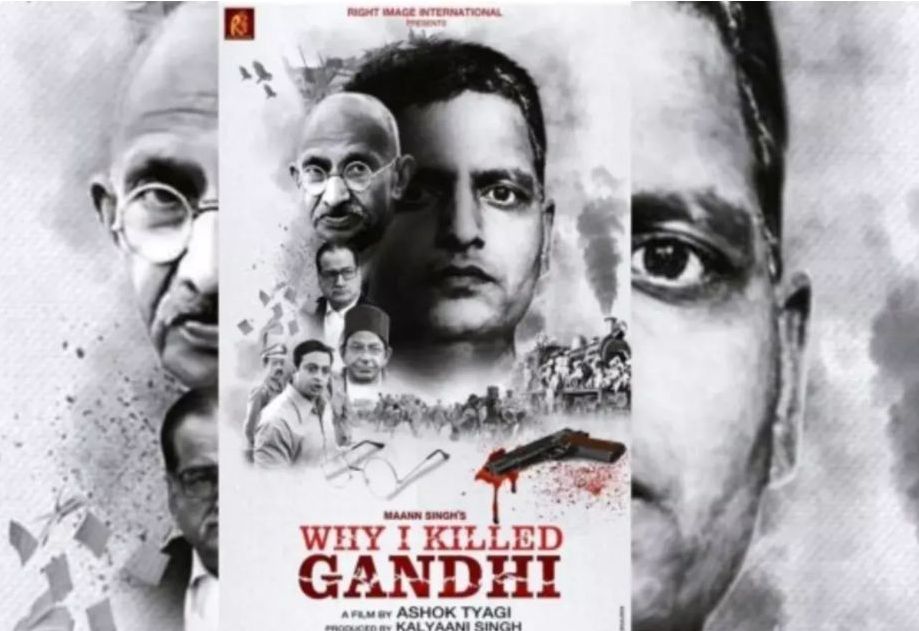
Second, although Modi touched on inclusion regarding geography and
gender, he avoided mentioning secularism or religious tolerance. Instead, he
defined Indians as Hindus: “This is our legacy. How can we not be proud of this
heritage? We are those people who see Shiva [a main Hindu deity] in every
living being,” he said. “We are people who see the divine in the plants. We are
the people who consider the rivers as mothers. We are those people who see
Shankar [another form of Shiva] in every stone.” For India, a country with 280
million non-Hindu citizens that has struggled with religious tensions since its
founding, Modi’s religious interjections signal a break from the past.
Finally, Modi used the occasion to launch familiar jabs against the
opposition Indian National Congress party while overlooking critical challenges
facing the Indian state—including religious intolerance. He concluded his
speech by slamming people who defend corruption and by condemning nepotism. But
this was coded language that may sound like a threat to some Indian citizens:
Modi and his ruling Bharatiya Janata Party (BJP) have
weaponized charges of corruption and nepotism to go after political opponents
and dissidents. Just days after Modi’s speech, his government conducted
an anticorruption
raid against Manish Sisodia, one of the prominent leaders of the
opposition Aam Aadmi Party.
Modi’s Independence Day speech is emblematic of a more significant
change under his rule, which has faced criticism for democratic
backsliding—moving away from the very constitution that came shortly after its
independence. The prime minister and the BJP are working to unshackle India
from its liberal and secular moorings, advancing a new national identity that
champions Hindu supremacy. This enterprise is antithetical to the very foundations of Hinduism, which is
an inherently pluralistic faith.
A750 sq ft National Flag was displayed at historical Lal Chowk by
Srinagar Sector CRPF. All civilians & force personnel came together to sing
the National anthem: Srinagar Sector CRPF:

Modi’s BJP government is also undercutting India’s institutions in
unprecedented ways. It has made a mockery of India’s rich tradition of civil
liberties by charging activists and dissidents with crimes under colonial-era
laws. One egregious example is the left-wing activists detained under the draconian
Unlawful Activities (Prevention) Act for alleged links to Maoist groups and
allegedly fomenting riots. One of the accused, lifelong Jesuit activist Rev. Stan
Swamy, died in custody last year. Furthermore, Modi and the BJP have
co-opted much of the media and essential private sector actors. Journalists
have faced intimidation
and harassment; prominent nongovernmental organizations have been
cut off from foreign funding, while others can receive overseas money only into
accounts with a government-owned bank.
The 1947 Partition created two newly-independent
states - India and Pakistan - and triggered perhaps the most significant movement of people
in history, outside of war and famine. About 12 million
people became refugees. Between half a million and a million people were killed
in religious violence.
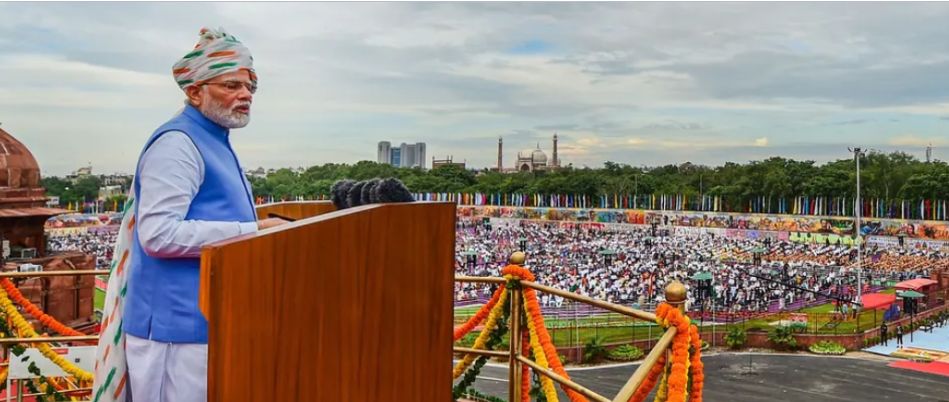
Not surprisingly, the most
critical lessons from the independence movement seem to be lost on India’s
contemporary leaders, as shown by their approach to religious pluralism and
democratic institutions. Although India’s leading revolutionaries were
committed to nonviolence, tensions between Hindus and Muslims marred the
independence movement. These tensions pulled the British Raj apart, and two new
countries emerged in its place: India and Pakistan. This week also marks the
anniversary of the Partition of India, which triggered one of the world’s worst humanitarian
disasters as Hindus, Muslims, and Sikhs were forced to flee
in different directions across the new border. A few months later, India and
Pakistan went to war over the status of Jammu and Kashmir—a disagreement that
still plagues the subcontinent.
In the face of these tensions, India and Pakistan’s leaders charted
opposing courses. India’s leaders advanced a progressive and modern vision for
their new country, eschewing a national Hindu religion in favor of a secular
identity. They worked hard to minimize religious tensions by speaking against
communal strife and promoting religious protections. When Gandhi was
assassinated in 1948—for supposedly being a supplicant to the Muslim
community—his political heirs continued to push for a liberal vision of India.
Working with the opposition, they produced a constitution that enshrined a
liberal and secular democracy that remains in force today.
On the other hand, Pakistan struggled. The country’s founder, Muhammad
Ali Jinnah, led the Muslim League that split from the Indian National Congress.
But he was rarely straightforward in his vision for Pakistan: There is some
evidence that he wanted a secular state, but he also called for an
Islamic republic. When Jinnah died in 1948, he left behind a political mess.
Liaquat Ali Khan, Pakistan’s first prime minister, rejected amendments offered
by the opposition in his founding document, which became a precursor to the
country’s 1956 constitution that gave Islam, its pride of place in the project
of Pakistan. By turning to communalism, Pakistan has suffered as political
actors stir religious tensions to benefit their ends. Without credible
institutions or norms that allow political differences to be resolved, the
country cannot maintain political order.
1) James Crabtree, The Billionaire Raj: A Journey Through India’s New
Gilded Age, 2008, p. 123.
2) The Brotherhood in Saffron. The Rashtriya Swayamsevak
Sangh and Hindu Revivalism, 1987, p. 133.
For updates click hompage here